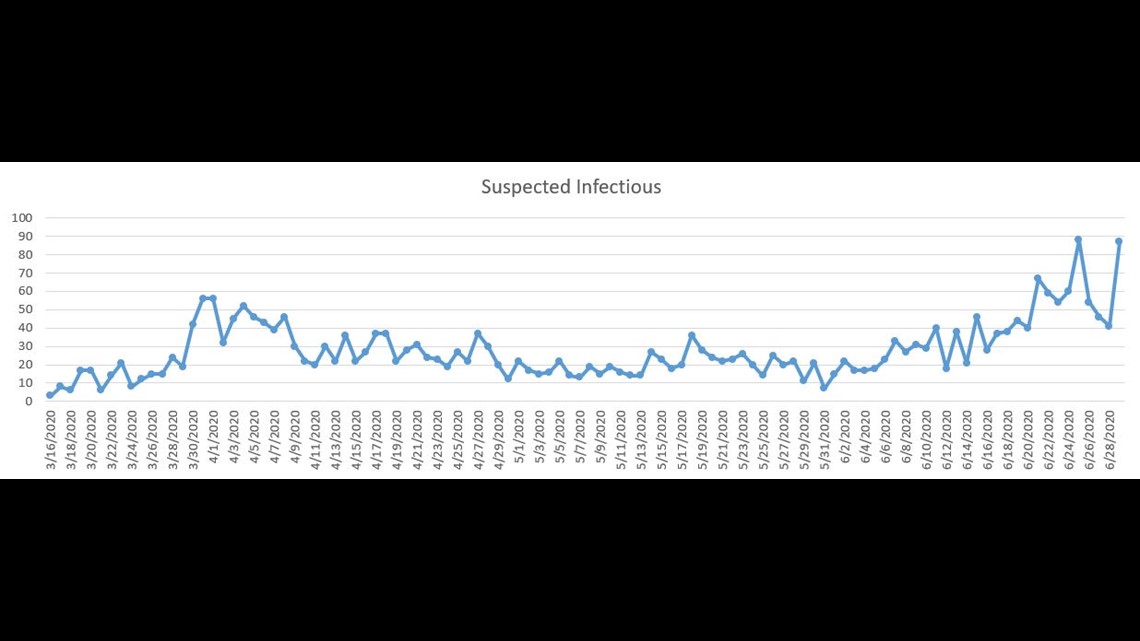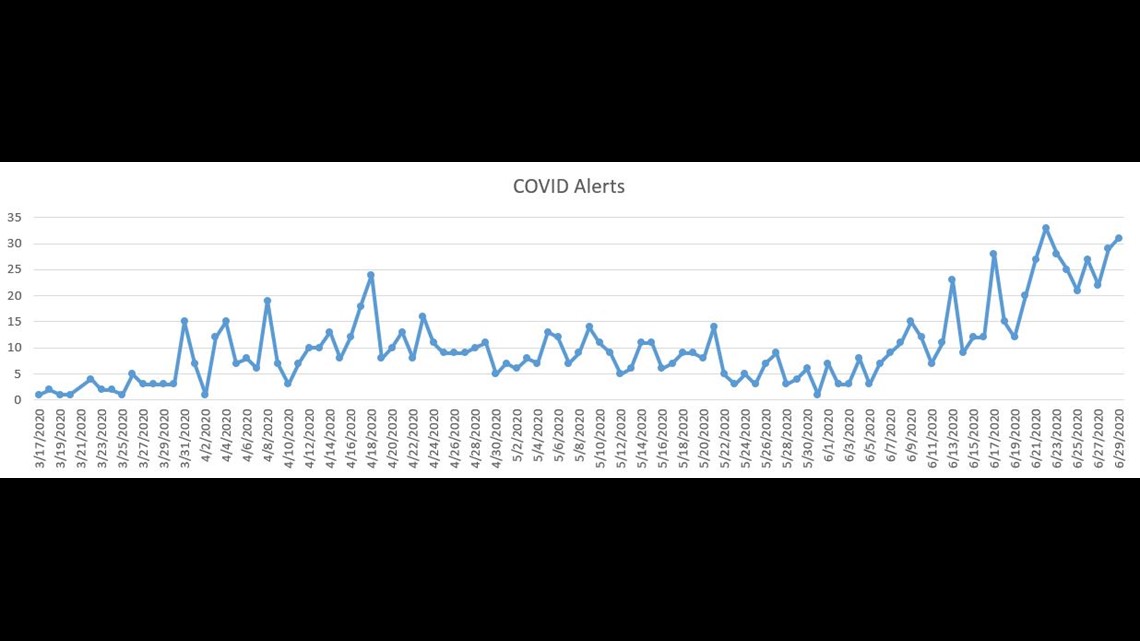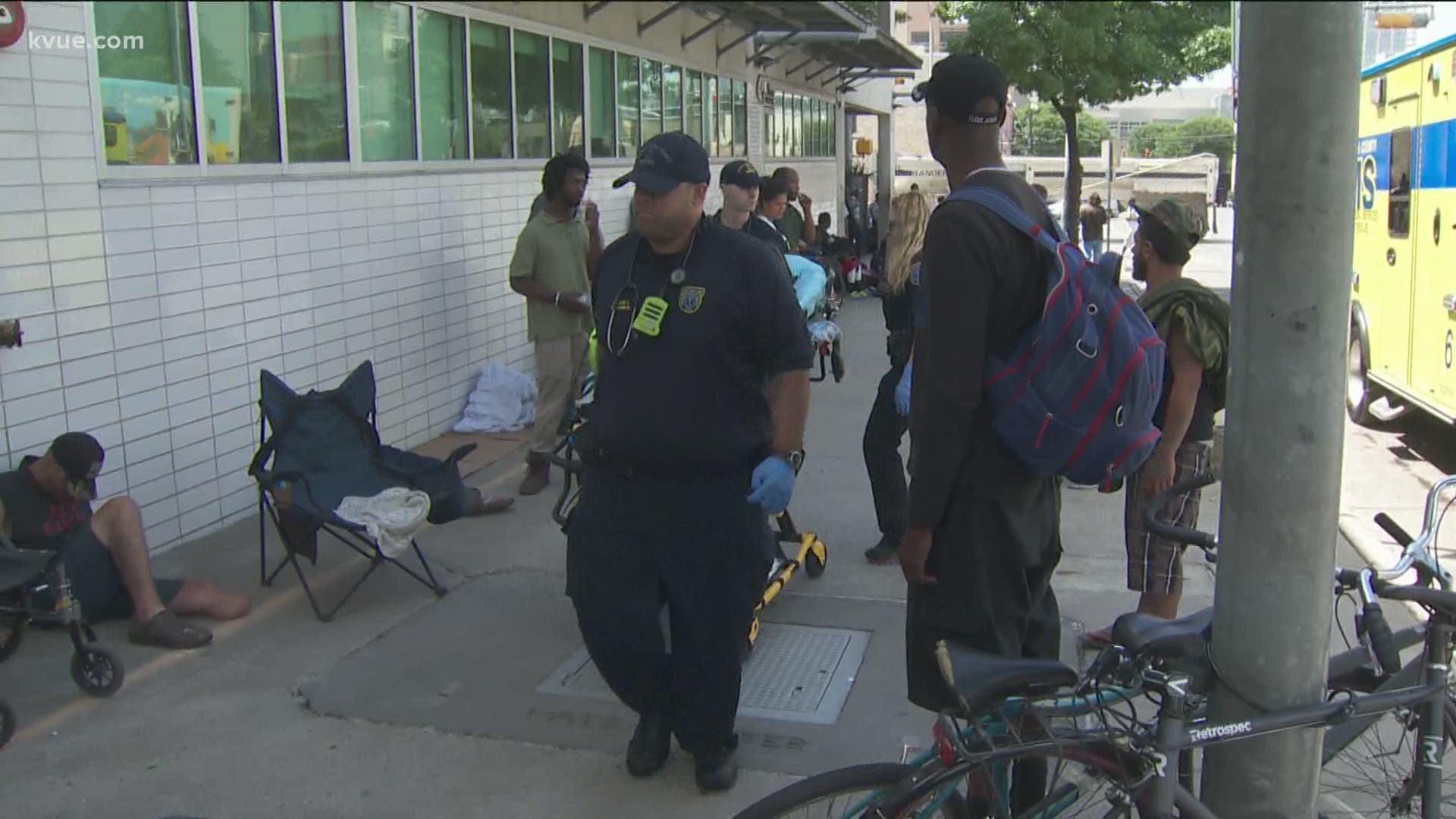AUSTIN, Texas — New data shows just how much the coronavirus is on the rise in the Austin community and that more people are calling 911 for help.
According to numbers KVUE received from Austin-Travis County EMS, first responders are seeing the highest number of COVID-19-related calls come in since this pandemic started.
“It's much more dramatic than anything we saw early in this pandemic,” said Austin-Travis County EMS Division Chief Ed Piker. “And the numbers now of total calls, the number of COVID Alerts and the number of infectious patients that we're seeing have all doubled or tripled compared to what we saw early on in this pandemic.”


He told KVUE they’re closely monitoring the number of suspected infectious and what they call “COVID Alerts” because they both tend to rise together. The suspected infectious are people who call 911 and EMS believes they might have COVID-19 or some type of flu-like illness.
On June 28, there were 87 calls and then an all-time high of 88 on June 25. About a week earlier, June 20, it was just at 40 and exactly a month ago, June 2, there were 22 of those calls.
Piker said some patients are screened as not likely to have COVID-19 and others are screened as likely. Those considered likely to have the virus, meaning their symptoms match up, are added to the COVID Alerts category.


Looking at those numbers, there was an all-time high of 33 COVID Alerts in a single day on June 22. On June 2, exactly one month ago that number was three.
According to Piker, the recent increase in COVID-19-related calls is causing them to reassess their resources.
“We're already at that point where the discussions are, 'Do we have enough resources,'” said Piker. “We're doing the long-term planning for what happens when resources become overwhelmed.”
He said they’re not overwhelmed yet, but things are trending in the wrong direction. So, do they have enough personal protective equipment (PPE) and what if this rise continues?
“In this case, we certainly have enough resources,” said Piker. “We have enough PPE, but long term planning we have to worry about whether or not we'll be able to sustain that if we don't see the numbers trend in a better direction.”
There’s also a concern if it spreads and a number of first responders get sick, then how will that affect the care the community receives? He said you’d likely see a diminished level of healthcare services if they can’t come to work. Because of that, he’s asking the community to heed the warnings from officials and turn things around.
“I think the community needs to heed the advice of city leaders at this point,” said Piker. “We really do need to change our behavior to make sure that this illness gets back in check. We're seeing it. Right now, we're seeing the numbers trend in a direction that is alarming. And if we don't get it back under control, this will be devastating from a medical aspect for our community.”
PEOPLE ARE ALSO READING:

